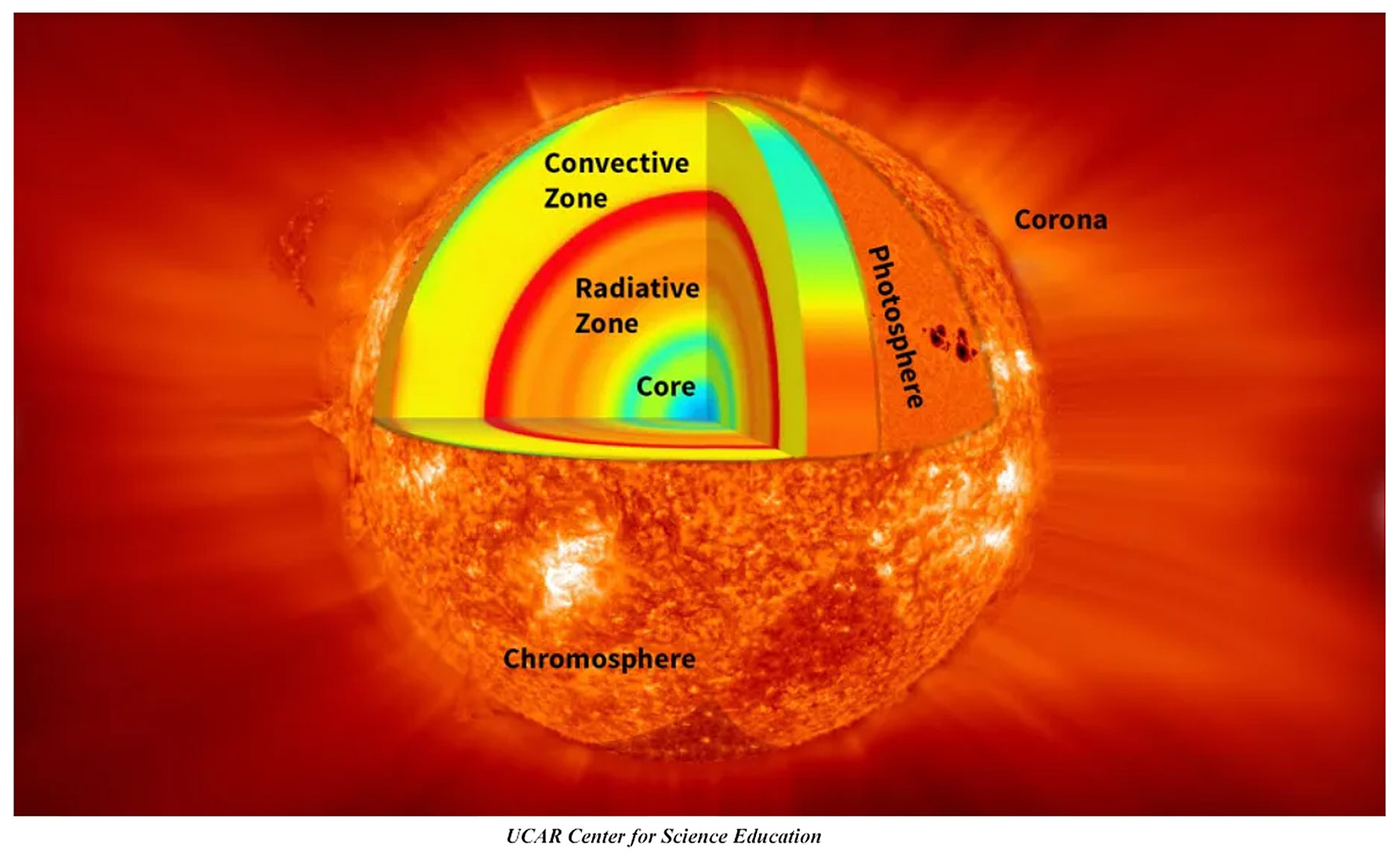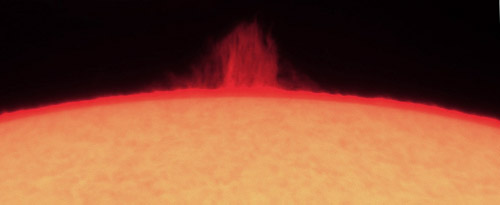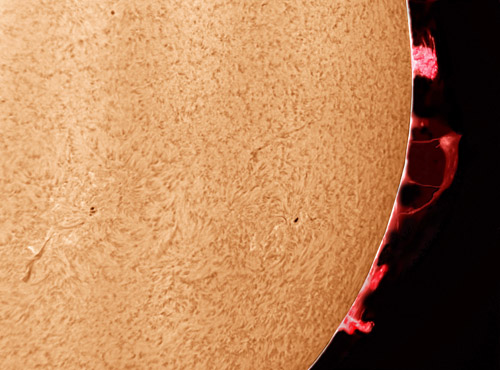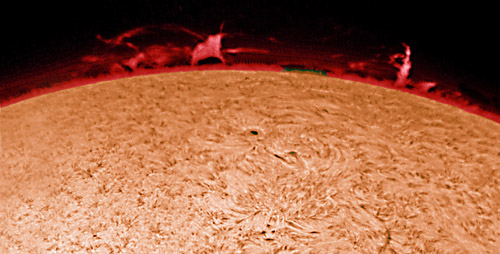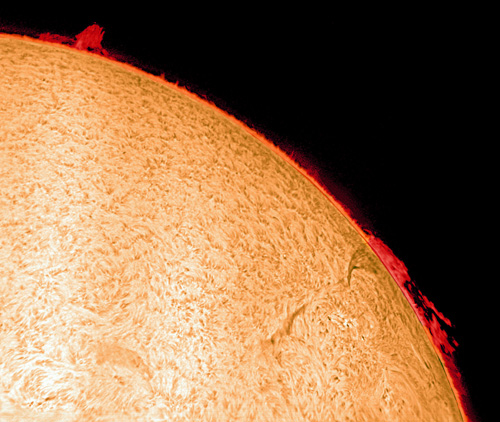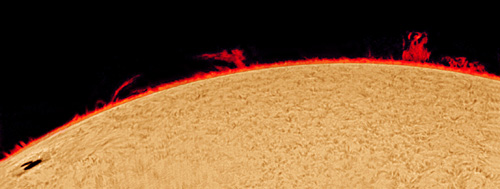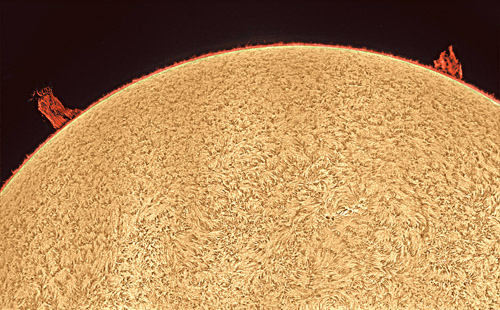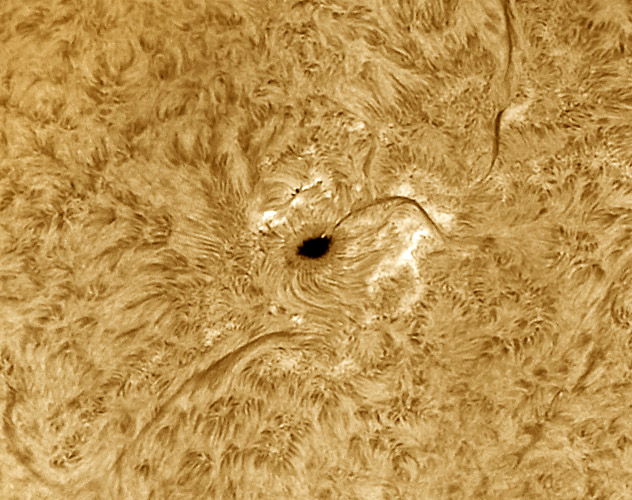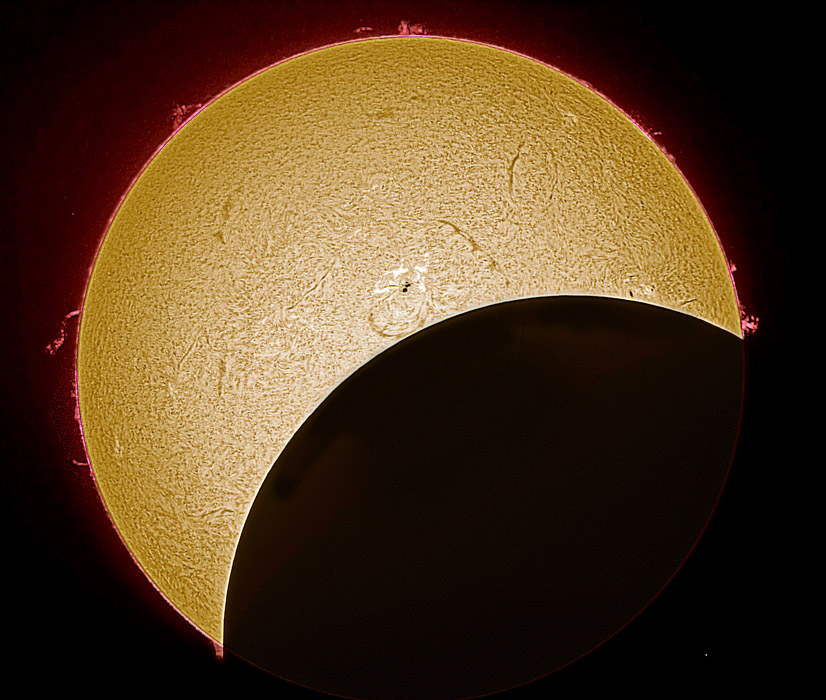|
Michael A. Stecker
|
|
| Home Astronomy Index Solar System | |
| The Sun | |
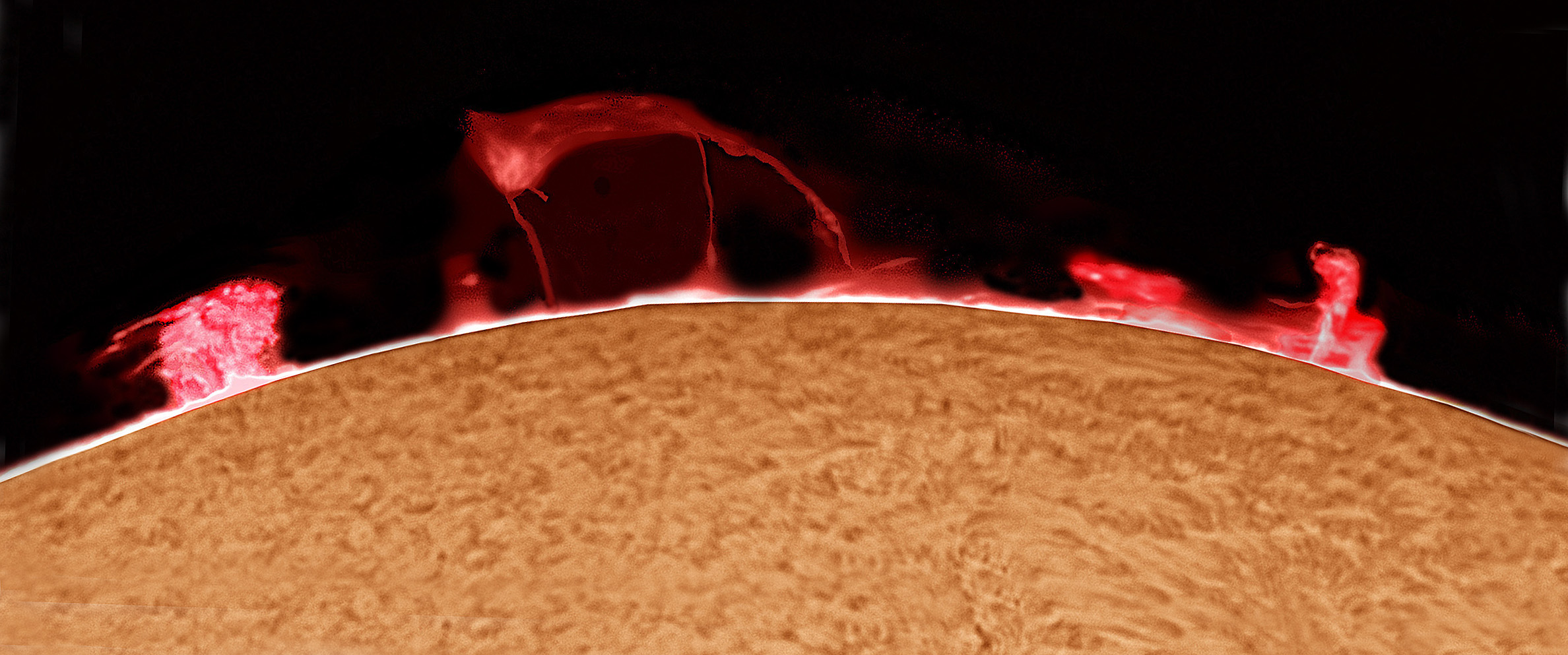 Cropped image of the sun's prominences taken on June 26, 2023 with a William Optics ZenithStar 73 mm doublet f/5.9 refractor, Daystar Quark Chromosphere eyepiece and ZWO ASI174MM Mini monochrome astro-camera. |
|
| About our Sun | |
|
The Sun is a G-type main-sequence star (G2v) informally called a yellow dwarf with an estimated age of 4.6 billion years. It is 93 million miles from earth (one Astronomical Unit, 1 AU). With a radius of 432,000 miles its volume would need 1.3 million Earths to fill it. The sun's mass represents 99.86% of the entire solar system and its gravity holds the system together, The sun's hottest part is the core where temperatures top 27 million degrees Fahrenheit (15 million degrees Celsius) produced from nuclear fusion of hydrogen to helium. The Sunís activity from its powerful eruptions to the steady stream of charged particles influences the nature of space throughout the solar system. Without the Sun's energy life as we know it could not exist on Earth. |
|
|
Solar anatomy
|
|
|
Photos of the Sun |
